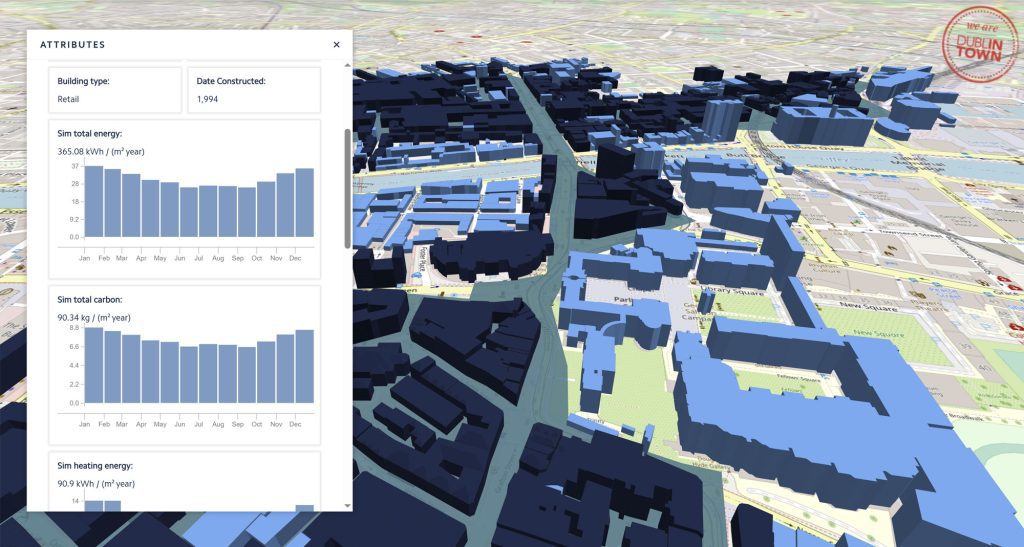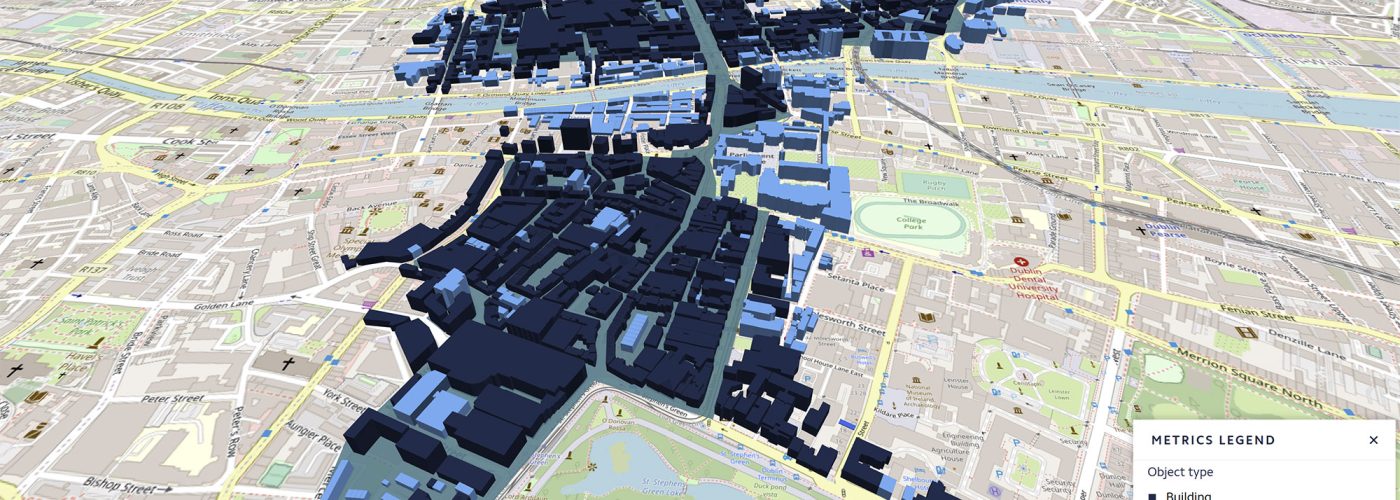IES has launched a publicly accessible 3D Urban Energy Model of the Dublin Town Business Improvement District, a landmark digital twin that places more than 3,000 city-centre buildings under a single, data-rich lens.
Commissioned by Dublin Town Business Improvement District – the organisation representing over 2,000 businesses across the capital – the model offers the most detailed picture yet of how each premise consumes energy, emits carbon, and could profitably transition to net zero.
Built with IES’s urban modelling engine, fed by an analytics platform and connected through the stakeholder engagement portal, the model fuses live operational data from buildings with physics-based simulation.
This unique combination allows users to explore current building performance, benchmark operational carbon emissions, pinpoint energy-intensive properties, and run sophisticated retrofit scenarios that range from light-touch behavioural changes to deep fabric upgrades, new heating systems, on-site renewables, and district-energy connections.
The resulting evidence is presented through live, interactive dashboards that continuously track progress, verify savings, and prevent buildings from slipping back into inefficient operation.
“In partnership with Dublin Town, we have created a living, breathing map of the city centre’s energy story,” said Ruth Kerrigan, COO at IES. “For the first time, business owners, investors, and policymakers can interrogate engineering-grade data in real time and see exactly which retrofit pathway will cut emissions, slash bills, and future-proof our historic streetscape.”
The work dovetails with Dublin City Council’s wider 2030 climate objectives. IES subjected the model to a suite of decision-support analyses, testing shallow, medium, deep and full-renovation strategies against the district’s decarbonisation targets. Annual operational-savings curves and stepped investment plans are now visualised for every building, giving stakeholders a clear, financially-robust roadmap towards climate neutrality.
Richard Guiney, chief executive of Dublin Town, believes the project marks a turning point for urban regeneration. “Dublin has committed to bold carbon-reduction goals, but businesses need the clarity and confidence to act,” he said. “This model translates ambition into practical steps and empowers every operator to be able to map their pathway to lower costs and lower carbon.”

To accelerate action on the ground, IES is extending free energy-audit support to eligible small and medium-sized enterprises (SMEs) in the district through the Sustainable Energy Authority of Ireland voucher scheme.
Companies with fewer than 250 employees, turnover below €50 million, and annual energy spend above €10,000 can secure a comprehensive assessment delivered by IES’s consultants. The audit involves reviewing a year of utility bills, conducting an on-site survey, identifying waste, and recommending no- and low-cost measures. Through this, it quantifies potential capital projects and sets out the corresponding energy, cost, and carbon savings in a tailored report for each building.
For building owners and managers ready to move beyond operational diagnosis to delivery, IES Live – the company’s flagship product – takes the district-wide insights down to individual assets, creating dynamic, evidence-based decarbonisation plans that are continually validated against real-time performance data. By comparing live energy feeds with predictive simulations in a single environment, IES Live offers a fully integrated platform, capable of turning building physics into actionable data and verified results.
With the model now in place and the tools to act readily available, Dublin’s path to a greener, more competitive city centre is mapped out.
Building, Design & Construction Magazine | The Choice of Industry Professionals





